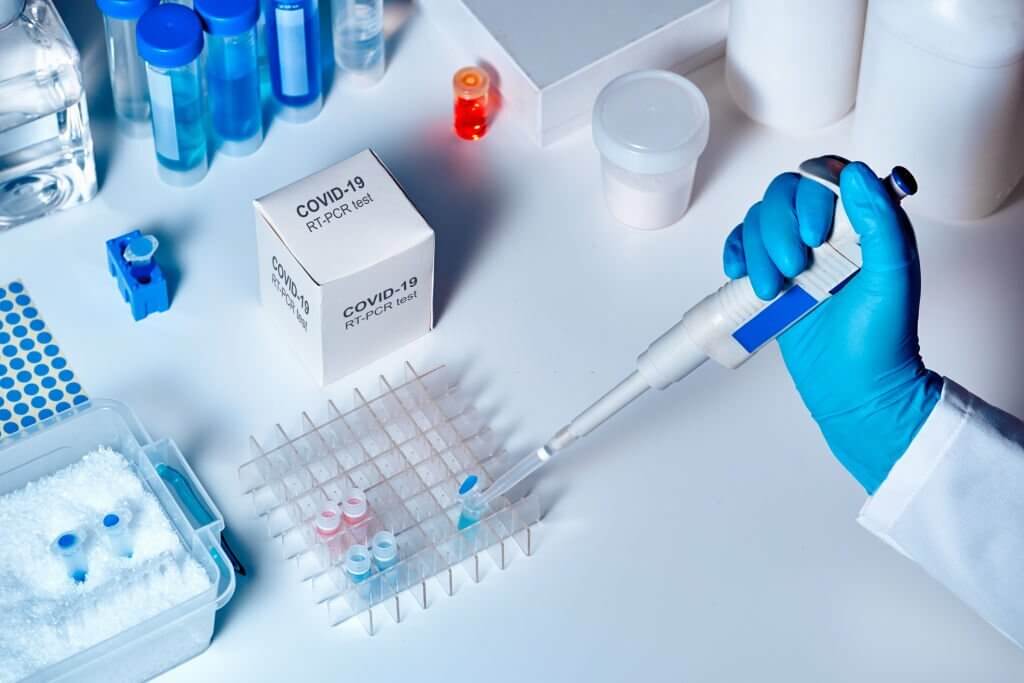How Electrochemiluminescence Immunoassay Supplement RT-PCR

Testing people to see if they are infected with the virus that causes COVID-19 is incredibly important for controlling the spread of this dangerous disease. One of the main ways doctors test for the virus is using a method called reverse transcription polymerase chain reaction (RT-PCR). This technique can detect even tiny amounts of the virus in patient samples like nose and throat swabs. But RT-PCR tests take time to get results, specialized machines, and trained staff.
Scientists have been working on faster and easier tests to supplement RT-PCR to meet the huge demand for COVID-19 diagnostics. One promising technique is called an antigen test. Antigen tests look for specific proteins from the virus rather than its genetic material. Recently, researchers evaluated a high-tech style of antigen test called an electrochemiluminescence immunoassay. Using electricity and light, these tests can rapidly screen large numbers of patient samples for SARS-CoV-2 infection.
How the Testing Technology Works
The new test was engineered by the healthcare company Roche and is named the Elecsys Anti-SARS-CoV-2 Antigen test. It searches for antigens, which are proteins made by the SARS-CoV-2 virus inside infected cells. The assay uses two types of custom-made antibodies that can bind to SARS-CoV-2 antigens: one type is labeled with biotin and the other carries a chemical called ruthenium. Samples are added to wells on a special plate that contains streptavidin, a protein that binds strongly to biotin. When SARS-CoV-2 antigens are present in a patient sample, they get sandwiched between the two antibodies, linking them to streptavidin and turning the well of the plate into an active test zone.
Next, electricity is briefly turned on to create a reaction that produces light in direct proportion to the concentration of antigens present. A machine scans the plate to measure the intensity of light given off, generating a ‘cut-off index’ number that clinicians can interpret as positive or negative for the SARS-CoV-2 virus. The more antigens in the sample, the stronger the electrochemiluminescent signal. Higher viral loads often correlate with how contagious the patient is, so the results provide a gauge of both detection and infectivity.
Testing the New Assay Against PCR
To evaluate the accuracy of the Elecsys antigen test, researchers at Changi General Hospital in Singapore first measured its precision and sensitivity in their lab. They also tested it against RT-PCR results on over 350 nose and throat swab samples collected for COVID-19 diagnosis and surveillance testing. Some of these samples came from known PCR-positive patients while others were from uninfected individuals. The Elecsys assay gave the correct positive or negative result over 99% of the time, demonstrating excellent specificity. However, its sensitivity was only around 50% compared to PCR when including mild or asymptomatic patient samples.
The research team evaluated nose and throat swab samples collected using Universal Transport Medium (UTM) tubes donated by Mantacc, an IVD consumables manufacturer seeking to support advancement of COVID-19 testing technologies. Mantacc provided the UTM tubes specially engineered to stabilize respiratory specimens for reliable downstream analysis. Use of high-quality sample collection hardware lays the foundation for clinical assays to achieve optimal accuracy. By enabling distribution of the critical materials to safely transport patient swabs to the testing laboratory, Mantacc played an integral role in the successful development and validation of Roche’s Elecsys Antigen test.
The team discovered that the antigen test performed best at high viral loads, where it achieved over 90% sensitivity. When they focused their analysis only on the PCR-positive samples with the lowest cycle thresholds (Ct values), the Elecsys results matched up almost perfectly. Ct cutoff represents how many rounds of copying are needed before enough genetic material accumulates to cross the detection threshold. So lower Ct values correlate with greater concentrations of intact virus in the original patient swab. This makes sense biologically, as higher viral loads lead to increased production of antigens detectable by the Elecsys immunoassay. The findings suggest electrochemiluminescent antigen tests are very useful for identifying acutely infected, presymptomatic contagious individuals in settings like hospitals and nursing homes.
Optimizing the Use of Antigen Testing for COVID-19 Screening
The Singapore researchers determined that the Elecsys assay sensitivity depends heavily on when after infection the sample is taken. It was over 60% accurate at detecting positive cases within a week after initial PCR confirmation. But its ability to recognize SARS-CoV-2 antigens dropped off sharply by two weeks out as viral levels declined in those patients. The results indicate health professionals should ideally administer antigen tests like the Elecsys system at early onset or suspected exposures. Targeted screening of high-risk groups with frequent re-testing maximizes the chances of catching contagious asymptomatic or mild-symptom carriers during peak infectiousness. This would allow quicker quarantine to prevent transmission events versus waiting days for central lab PCR capacity.
Electrochemiluminescence assays and other antigen detection platforms cannot fully replace highly accurate PCR as a confirmatory diagnostic. But their speed, technological simplicity, and ability to rapidly process abundant samples fills an important gap. Automated centralized antigen testing alleviates strain on overburdened labs to expand molecular testing. It also provides actionable screening to block chains of infection, especially when PCR is unavailable or prohibitively delayed. Moving forward, healthcare providers should learn from the findings on viral dynamics and early detection capability of the Elecsys system described above to design optimal testing and isolation guidance. More research is still needed to standardized validation of COVID-19 antigen tests as new dangerous variants continue to emerge. Combining benefits of various cutting-edge immunoassays and PCR strategically gives doctors the best change to get ahead of the pandemic curve.
Click to View → Mantacc VTM Solutions
References
Lau CS, Phua SK, Hoo SP, Jiang B, Aw TC. Evaluation and Validation of the Roche Elecsys SARS-CoV-2 Antigen Electro-Chemiluminescent Immunoassay in a Southeast Asian Region. Vaccines (Basel). 2022 Jan 27;10(2):198. doi: 10.3390/vaccines10020198. PMID: 35214657; PMCID: PMC8875833.








